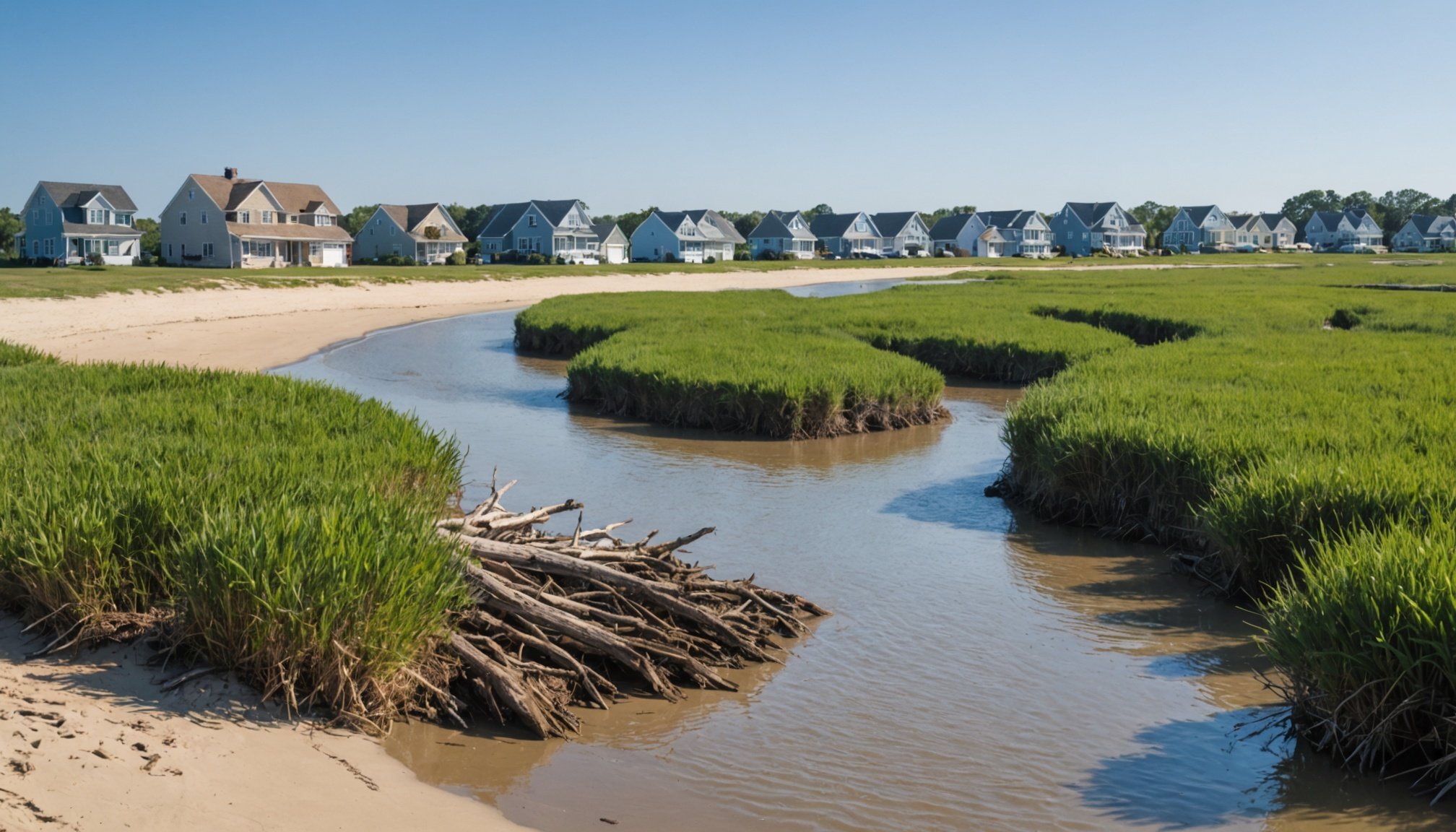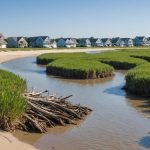Understanding Coastal Erosion in Norfolk
Coastal erosion presents a significant challenge to Norfolk homeowners. With rapidly changing shorelines, properties in the region face the threat of degradation and loss. This phenomenon is driven by several environmental challenges that uniquely affect Norfolk.
The primary causes of coastal erosion in Norfolk include rising sea levels and increasing storm intensity. These factors accelerate the wear on the coastline, leading to heightened risks for property owners. The soft geology of the area, comprised mainly of sandy and clay soils, further exacerbates the problem as these materials are highly susceptible to erosion.
Additional reading : Maximize your returns: the ultimate handbook for calculating rental yield on converted warehouse properties in birmingham
Addressing erosion risks is crucial for the long-term preservation of properties in Norfolk. Proactive measures such as landscaping, constructing seawalls, and community engagement are essential strategies. Identifying and mitigating these risks not only protects personal property but also preserves the community’s overall economic and environmental health.
The importance of consistently addressing these erosion challenges cannot be overstated. Implementing effective solutions ensures the community’s resilience against the persistent threat of coastal erosion. Homeowners, in collaboration with local authorities and environmental organisations, play a pivotal role in safeguarding Norfolk’s shorelines for future generations.
Also to discover : Unveiling the future: how the uk”s aging population is reshaping retirement property markets
Landscaping Techniques to Mitigate Erosion
Implementing effective landscaping techniques can provide significant erosion control benefits for Norfolk gardens. Homeowners can adopt various strategies to protect their property from coastal erosion, leveraging both natural and structural interventions.
Native Plant Selection
Choosing native plants offers key advantages for soil retention. These species, adapted to local conditions, stabilize the soil and combat erosion naturally. Recommended native species for Norfolk coastal areas include sea lavender and marram grass. These plants not only reinforce soil structure but also reduce the impact of wind and water erosion.
Strategic Planting Layouts
Opting for strategic planting configurations can effectively combat slope erosion. Dense foliage and staggered arrangements help create natural barriers against wind and water, promoting a more stable environment. The creation of layered vegetation enhances the landscape’s defence, using nature’s complexity to reinforce shorelines.
Utilizing Mulches and Ground Covers
Applying mulches and ground covers is another key strategy for erosion control. Mulching aids in moisture retention and soil stabilization. Ground covers like creeping thyme and sedum thrive in Norfolk’s sandy soil conditions, offering durable and attractive options for fortification. These practices reinforce the soil, ensuring a robust defence against erosion while enhancing garden aesthetics.
Structural Solutions: Seawalls and Groins
Implementing seawalls and groins provides a robust approach to shoreline protection for Norfolk’s coastlines, offering potential long-term solutions to combat erosion.
Types of Seawalls
Seawalls vary in materials and effectiveness, and their choice depends on site conditions. Concrete seawalls are durable and provide high structural integrity, well-suited for high-energy environments. In Norfolk, some successful implementations involve using interlocking concrete blocks which adapt to the shoreline dynamics while resisting wave impact. Timber seawalls, while less durable than concrete, blend better aesthetically with natural settings and are used in low-impact areas.
Groin Construction Benefits
Groins, often built from rock or timber, play a pivotal role in modifying sand accumulation patterns along the coast. They extend into the sea, trapping sand and slowing erosion on the downdrift side. Norfolk’s coastline has seen positive outcomes from groins, helping stabilize beaches and protect properties in vulnerable areas.
Maintenance Considerations
Regular maintenance of seawalls and groins is essential. This involves routine inspections for structural integrity and community involvement in upkeep activities, ensuring the effectiveness and longevity of these structures. Engaging local volunteers not only fosters community spirit but also enhances public awareness of erosion challenges and solutions.
Community Resources and Local Initiatives
Community support plays a crucial role in addressing the environmental challenges faced by Norfolk homeowners due to coastal erosion. Numerous local initiatives are in place to combat these issues, providing valuable assistance and education to the community.
Local government programs in Norfolk actively address coastal erosion through comprehensive strategies and funding. These initiatives focus on building shoreline resilience while involving residents in decision-making processes. Homeowners gain access to practical information and resources to better manage erosion risks on their properties.
Community workshops offer residents the chance to learn about sustainable practices tailored to Norfolk’s unique environment. These educational resources highlight the importance of vegetation, seawalls, and other techniques in mitigating erosion. Workshops foster a sense of collaboration among residents, encouraging shared responsibility and action.
Partnerships with local environmental organizations enhance the scope of support available to those affected. These collaborations bring specialized knowledge and resources that empower homeowners to implement effective erosion control measures. By engaging with experts, Norfolk residents can develop personalized strategies to protect their homes and preserve the coastline for future generations. Together, these community efforts create a robust network that supports Norfolk’s environment against ongoing erosion challenges.
Case Studies of Successful Erosion Mitigation
Exploring case studies provides valuable insights into effective erosion mitigation strategies in Norfolk. These examples shed light on practical approaches that have successfully tackled coastal erosion challenges in the region.
Homeowner Success Stories
Numerous homeowners in Norfolk have employed innovative solutions to mitigate erosion, demonstrating both resourcefulness and resilience. For instance, one homeowner combined strategic native planting with the construction of a small seawall. By reinforcing the shoreline with sea lavender and employing interlocking concrete blocks, they effectively curbed erosion, preserving their property.
Community Projects and Impact
Community-driven initiatives have similarly made significant strides in reducing erosion. In one project, local volunteers collaborated to create a series of groins along a eroded stretch of coastline. These structures promoted sand accumulation, effectively stabilising the beach and extending property safeguarding. The success of such projects highlights the power of collective action.
Visual Evidence of Erosion Mitigation
Before-and-after photographs vividly illustrate the transformation achieved through these mitigation efforts. One property, previously threatened by severe erosion, now boasts a lush garden fortified by layered vegetation and mulches. These visual testimonies underscore the tangible benefits of adopting proven techniques in the battle against coastal erosion.








